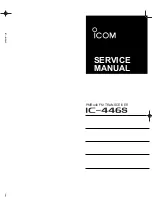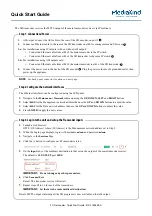
Ulthera, Inc.
Page
23
Under some conditions (for example, high ambient temperature and long
scanning period), the transducer surface temperature may exceed 41oC.
Scanning will be automatically disabled if the internal transducer
temperature reaches 43oC.
4.4.1.
The ALARA Principle and Usage
ALARA (As Low As Reasonably Achievable) is the recommended guidance
for ultrasound scanning. Details are thoroughly described in “Medical
Ultrasound Safety”, published by the American Institute of Ultrasound in
Medicine (AIUM), 1994 [1]. The Ulthera system has a fixed, low acoustic output
for imaging which helps keep exposure and bio-effects to a minimum. This
simplicity of the Ulthera system and clinical protocols enhances the user’s
ability to follow the ALARA principle.
The imaging mode determines the nature of the ultrasound beam. The
Ulthera system has B-mode scanning only, whereby the acoustic beam is
scanned over a wide field-of-view. Ulthera has a fixed transmit focal depth
and power level, relieving the user of adjusting these parameters. Limiting
imaging time therefore minimizes exposure time.
The Ulthera imaging/therapy transducer selection depends upon the desired
clinical protocol. The variables which affect the way the user implements the
ALARA principle include: patient body size, location of the bone relative to
the focal point, attenuation in the body, ultrasound exposure time, and
potential localized heating of the patient due to transducer surface
temperature.
System controls are divided into three categories relative to output: controls
that directly affect output, controls that indirectly affect output, and receiver
controls.
Direct Controls. Fixed settings limit acoustic output through default. The
acoustic output parameters that are set at default levels are the mechanical
index (MI), thermal index (TI), and the spatial peak temporal average intensity
(ISPTA). The system does not exceed an MI and TI of 1.0 or an ISPTA of 720
mW/cm2 for all modes of operation.
Indirect Controls. The controls that indirectly affect output are controls
affecting freeze (Scan N) or scan (Scan Y). Tissue attenuation is directly
related to transducer frequency.
Receiver Controls. The only receiver control is the Display brightness control
and it does not affect output. It should be used if necessary to improve
image quality.
Содержание DeepSEE DS 4 - 4.5
Страница 1: ...Ulthera Inc Page 1 Ulthera System Instructions for Use Featuring DeepSEE Technology for Ultherapy...
Страница 2: ...Page 2 Ulthera Inc THIS PAGE INTENTIONALLY LEFTBLANK...
Страница 38: ...Page 38 Ulthera Inc 6 1 1 Face Neck Amplify...
Страница 39: ...Ulthera Inc Page 39 6 1 2 General Regions Face Neck...
Страница 69: ...Ulthera Inc Page 69 THIS PAGE INTENTIONALLY LEFTBLANK...
Страница 70: ...Page 70 Ulthera Inc THIS PAGE INTENTIONALLY LEFTBLANK...
Страница 71: ...Ulthera Inc Page 71 THIS PAGE INTENTIONALLY LEFTBLANK...
















































